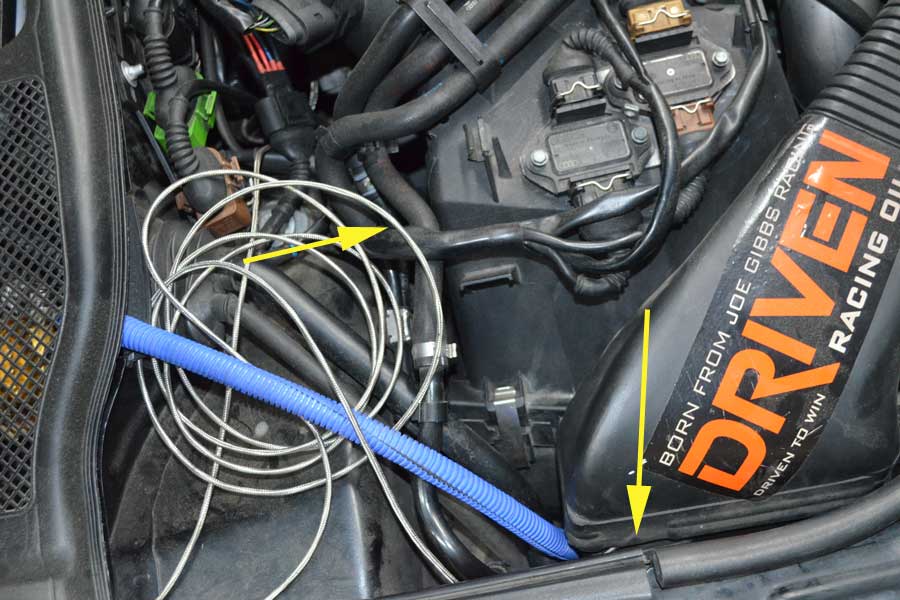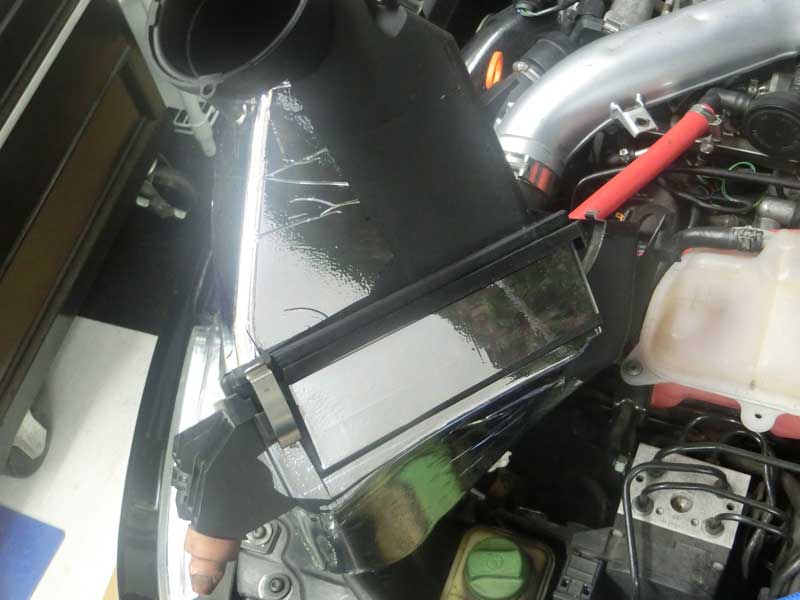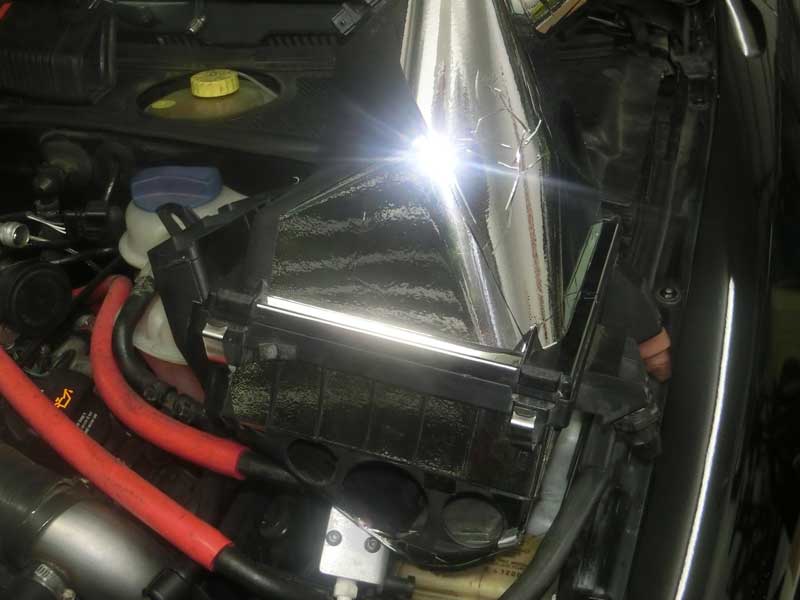A few weeks ago I decided to put a roll of 3M Aerolite reflective film to use, this is a product that is similar to the DEI Reflect-A-Gold foil.
I took temperature measurements from a few locations on the B5 S4 intake, before and after the air filter inside the Airbox, inside the turbocharger inlet pipe that runs alongside the exhaust manifold, (on the side with the Airbox), and also the reading from the S4’s IAT sensor.
The question I was looking to answer: “does applying reflective foil to the exterior of the airbox lower intake air temperature?”
I took three readings without any foil during my daily commute home to establish a baseline for the airbox performance. On the final day I also recorded the temperatures on the drive in, which took place under cooler ambient conditions.
Then I applied the 3M Aerolite film to the exterior of the airbox.
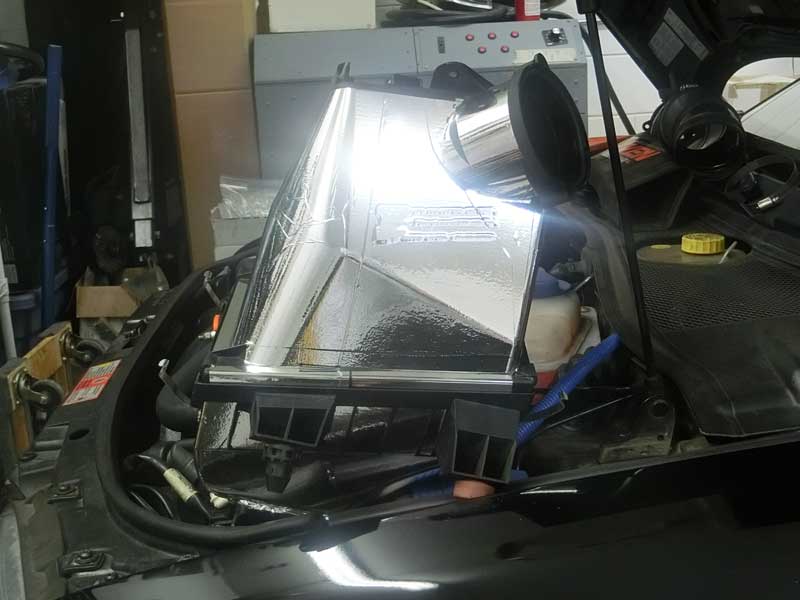
As the pictures above show, I covered most, but not all the airbox. I left the side that attaches to the vehicle body by the fender uncovered, as well as the back part of the underside that sits above the venting in the wheel-well liner.
My goal was to apply the reflective film in areas that are in line of sight with hot components to hopefully reduce the transfer of radiant heat.
With the airbox wrapped up I went back out to take “after” readings.

Shown above are the results from my “afternoon” drive. The chart shows the temperature delta above ambient, that is, difference between the inlet pipe reading and the ambient air temperature. Ambient air temperature is reported by the vehicle Outside Air Temperature sensor. I found the vehicle sensor and my temperature probe to be 1 degree off from each other.
If the air temperature inside the airbox is being kept lower through use of the reflective foil it should be detected by the sensor that is downstream of the airbox.
A couple of things to note about the readings. They were made over several days so the driving conditions were varied. Stoplight sequencing was a primary driver for the variance in rate of temperature change, but ambient temperature played a part as well. On cooler days the temperature rise was less pronounced.
On the chart above the two blue lines are the results with the foil applied. These reading are also indicated by an asterisk * in the legend.
Shown below are results from the morning drives, again with foil applied drives indicated with the asterisked * name in the legend.
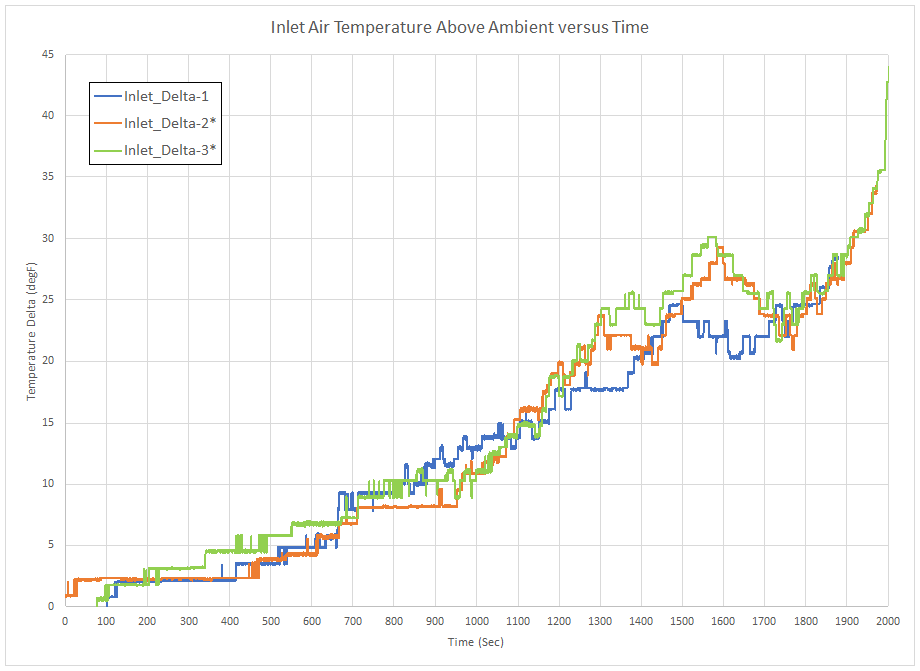
Because the commute is from a suburb into the city steady state speed is maintained in the first part of the morning drive, with stop and go actions cropping up toward the later part of the drive.
This is reversed in the afternoon drive, where stop and go driving is predominant early in the drive, and then steady state driving is observed later in the drive.
Conclusion:
There does not appear to be much influence on the inlet air temperature as a result of applying the 3M Aerolite foil.
This test does not take place under the exact same temperature conditions, with the exact same amount of time spent at stop lights, or at the exact same speed at specified times during the drive.
On the other hand, if the foil made a difference one would hope it would be evident from typical driving patterns. Most telling is the temperature data toward the last couple of minutes of the drives. After roughly 30 minutes (1800 seconds) of driving the temperature above ambient is within 2-3 degrees and the temperature lines become difficult to distinguish as they bunch together.

